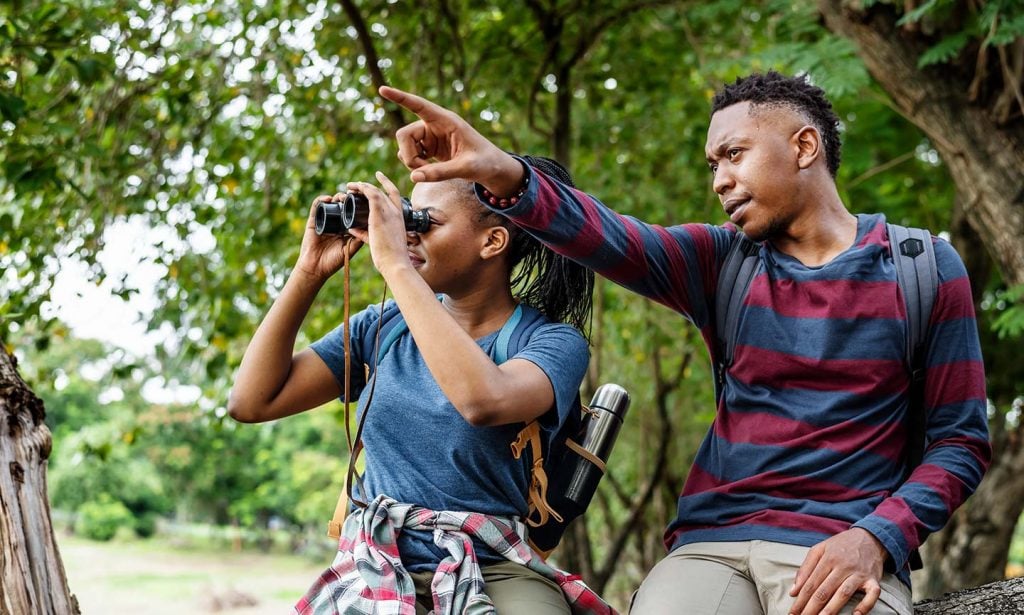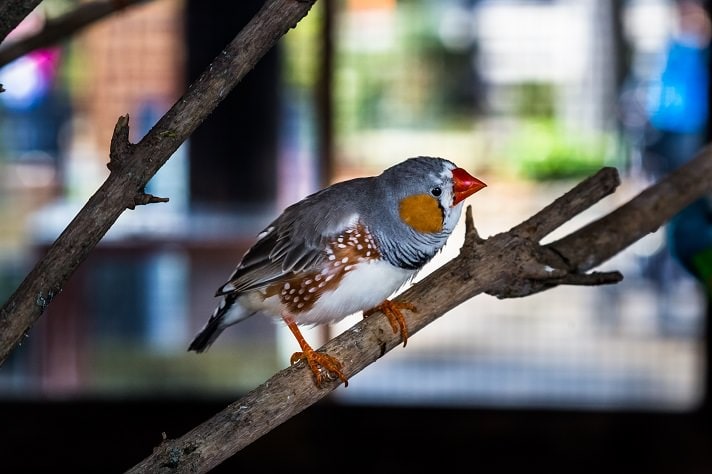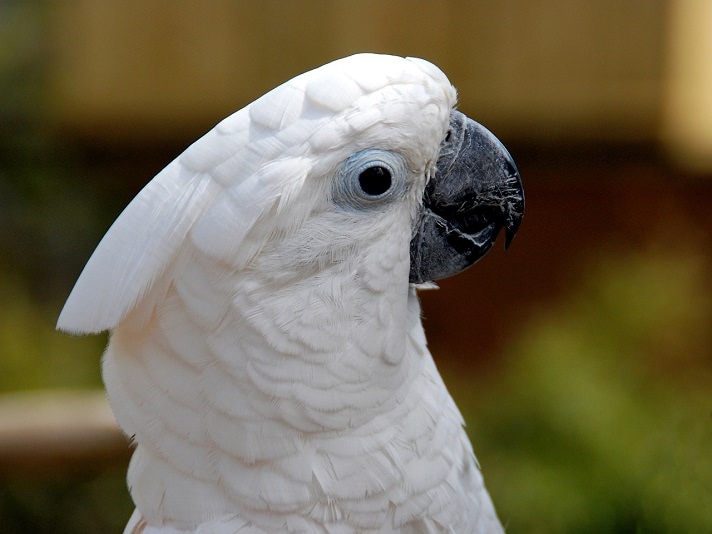Why Is Birding So Big Right Now?
Birding has been popular amongst nature lovers for decades, but the COVID-19 pandemic launched it into a full-fledged fad. When stay-at-home orders left people looking for activities to do both outdoors and close to home, birding was a natural fit. Birding also involves spending time in nature, which research has shown boosts both mental health and physical well-being—and that's something everyone can use. In fact, David Lindo, the bird guide leader and urban wildlife educator known as the Urban Birder, says that for him, birding is a type of meditation.
But the benefits of birding don’t stop there:
- Exploring Your Neighborhood: One of birding’s greatest benefits is discovery. “Often you find things in your local neighborhood that you never thought would be there,” Lindo says. “Birding enables people to have a sense of place.”
- Finding Your Community: Many birders link up in local groups, going on bird-watching excursions together—and becoming part of a tight-knit group in the process. That’s part of what made this activity so big in recent years, says Jenna Curtis, Ph.D., project co-leader for eBird with the Cornell Lab of Ornithology: As people were feeling increasingly isolated during the pandemic, birding was one way they found connection.
- Learning Fascinating Facts: Geoff LeBaron, the Christmas Bird Count director for the National Audubon Society, says birding captures the joy of learning, no matter your age or ability. Each excursion is a chance to learn about the identifying characteristics, typical habitats, and migration patterns of the birds in your area—and, if you hit the bird watching jackpot, even to spot a bird you’ve never seen before.
- Enjoying It Anywhere: No matter where you are, there’s almost guaranteed to be a thriving population of birds near you, says Monica Bryand, the founder of the Urban Bird Collective in Minnesota. Even if you’re stuck at home, she says, bird watching is something you can do just by looking out your window.
All-in-all, birding is a way to reduce stress, get some fresh air, make new friends and learn about the world—what’s not to love?

Beginner Birding Gear
The beauty of birding is that you don’t need any specific birding gear or bird watching tools. As Lindo says, you can simply walk outside and look up (or around) to see what’s flying nearby. But if you want to take your birding up a notch, our experts recommend two basic items:
1 A Field Guide
You can opt for a digital guide or a book. Most birding guides will have detailed photos or illustrations as well as helpful information about the bird’s habitat, feeding and nesting behavior, songs and calls, and migration patterns. Birding guide apps also include features like bird ID, audio files of songs and calls, and recently reported bird sightings by location.
If you have a smartphone, check out these free apps:
If you prefer a hard copy book, look for:
- National Geographic Field Guide to the Birds of North America
- Peterson Field Guide to Birds of North America
2 A Quality Pair of Binoculars
A high-quality pair of binoculars will allow you to zoom in to see birds with a whole new level of clarity and detail. Binoculars range in price from a couple hundred dollars up to several thousand dollars. Our birding experts recommend saving and investing in a mid-price range pair if you can. These optics typically cost between $300-$500, and will be slightly higher quality for birding and will also hold up better if they’re accidentally bumped or dropped. A few things to keep in mind while shopping for binoculars:
- Hold the binoculars up to your eyes to be sure they fit your face and feel good to hold in your hands
- If you wear glasses, get a pair of binoculars with a longer eye relief. Eye relief is the distance from your eye to the glass of the eyepiece, and a longer one will accommodate your glasses without reducing your field of view.
- Look for a magnification power of 8 and a lens diameter of 32 or 42. (You’ll typically see those two numbers listed together, like this: 8x32 or 8x42.) A higher magnification will give you a closer, more detailed look, but also a narrower field of view. The lens size tells you the physical size of the binoculars as well as how much light the lens can gather—the more light, the brighter image you’ll see.
Here are a few pairs our experts recommend:
- Nikon Monarch 5 8x42 (cost: $280)
- Vanguard Endeavor ED 8x42 (cost: $300)
- Zeiss Terra ED 8x42 (cost: $450)
Pro tip: If you aren’t sure what kind of binoculars to shop for (or if you even want binoculars), Bryand recommends visiting your local birders' meetup and asking to have a look through another member’s pair. Local nature centers and some libraries might also have binoculars that you can rent or borrow for the day to give zoomed-in birding a try.
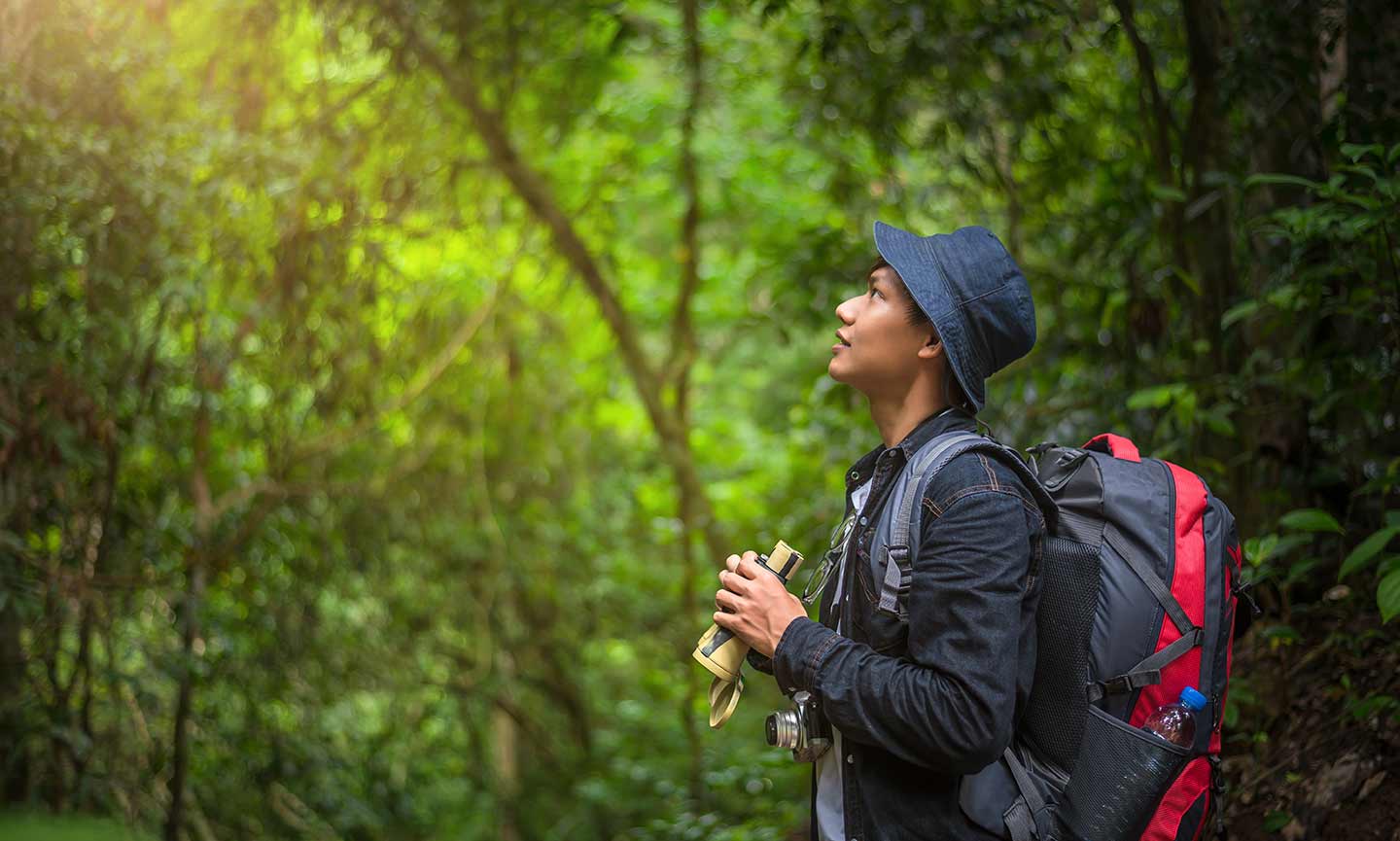
How to Go Birding: A Guide for Beginners
Ready to plan your first birding outing? Here are some tips for bird watching for the first time.
1 Download an app or get a guidebook
Familiarize yourself with your local birds before you head out birding. Flipping through a guidebook or scrolling through an app will teach you about the types of birds in your area—and where you might find them. In addition to the recommendations listed above, the American Birding Association offers a free eBook for beginners that has some great pointers.
Also, take note of what kind of birds interest you. Do you want to see waterfowl? Shorebirds? Hummingbirds? Songbirds? Different species of birds can be found in different habitats, so knowing what type of birds you’d like to see will help you determine where to go. Speaking of which…
2 Research where to go—and who to go with
A great way to get started is to find a local birding group. Think of these as your neighborhood experts, best suited to give you an introduction to bird watching. Not only will this help you find some great birding spots, but it will also get you involved in your local birding community. The leader of a local bird walk can point out where to look for birds and also help you identify the birds that you see. To find a group near you, check out the American Birding Association’s list of clubs and organizations.
If you’d rather head out on your own or you don’t have a local bird club in your area, one of our experts’ best recommendations is to check an app like eBird (see link above in the Gear section) to see where folks are recording birds near you. You can also reference our handy guide to birds across the U.S.—but keep in mind that this is just a small fraction of the types of birds you’re likely to see.
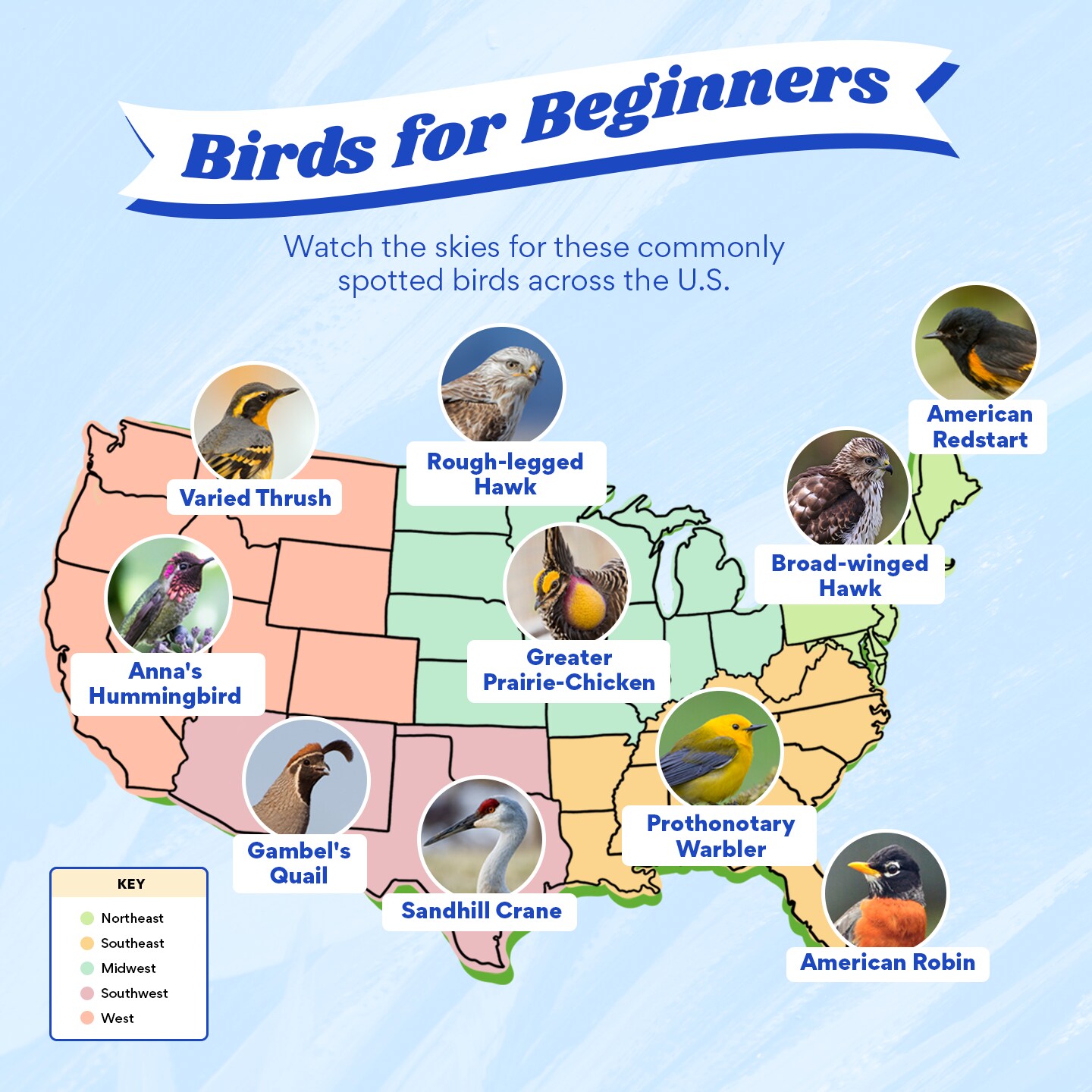
Download this map and bring it on your next birding adventure
Even if you live in a busy urban area, there are plenty of spots where birds hang out. For example, LeBaron says there is some surprisingly great birdwatching in New York City, thanks to Central Park; Curtis recently returned from a successful birding trip along the lakefront in downtown Chicago. Birds are talented at turning just about any environment into a habitat, booming metropolises included. If you’re in a city, local parks or greenspaces will be your best bets.
3 Pack your bag
Think about your trip in much the same way you’d prepare for a hike. Wear durable, comfortable shoes and weather-appropriate clothes in muted colors, so as not to tip off the birds to your presence. (Many birds have excellent color vision, LeBaron says.)
In addition to your field guide and binoculars, here are a few extras to toss in your backpack for a day in the field:
- Extra layers
- Sunscreen
- Snacks
- Drinking water
4 Get out there!
You’ve researched, you’ve packed, and now you’re ready to actually go birding! Expect lots of walking, sitting, listening and observing. If you’re going with a group, ask about the length and speed of the hike so you’re fully prepared. If you go on your own, you can set your own pace.
When it comes to how to bird watch, it’s as easy as keeping your eyes peeled to see whatever birds you can spot. In addition to birds, you might see other wildlife, plants and generally some cool scenery while you’re at it, too.
5 Record your observations
No, you don’t have to keep records while birding, but some birders love keeping detailed lists (written or digital) of all the species they have seen. Others enjoy taking pictures or recording birdsong. Lindo says that the key to this optional step is to keep it fun and experiment to discover the ways you enjoy recording your observations.
Birding can be what you want it to be. There are no rules or regulations.
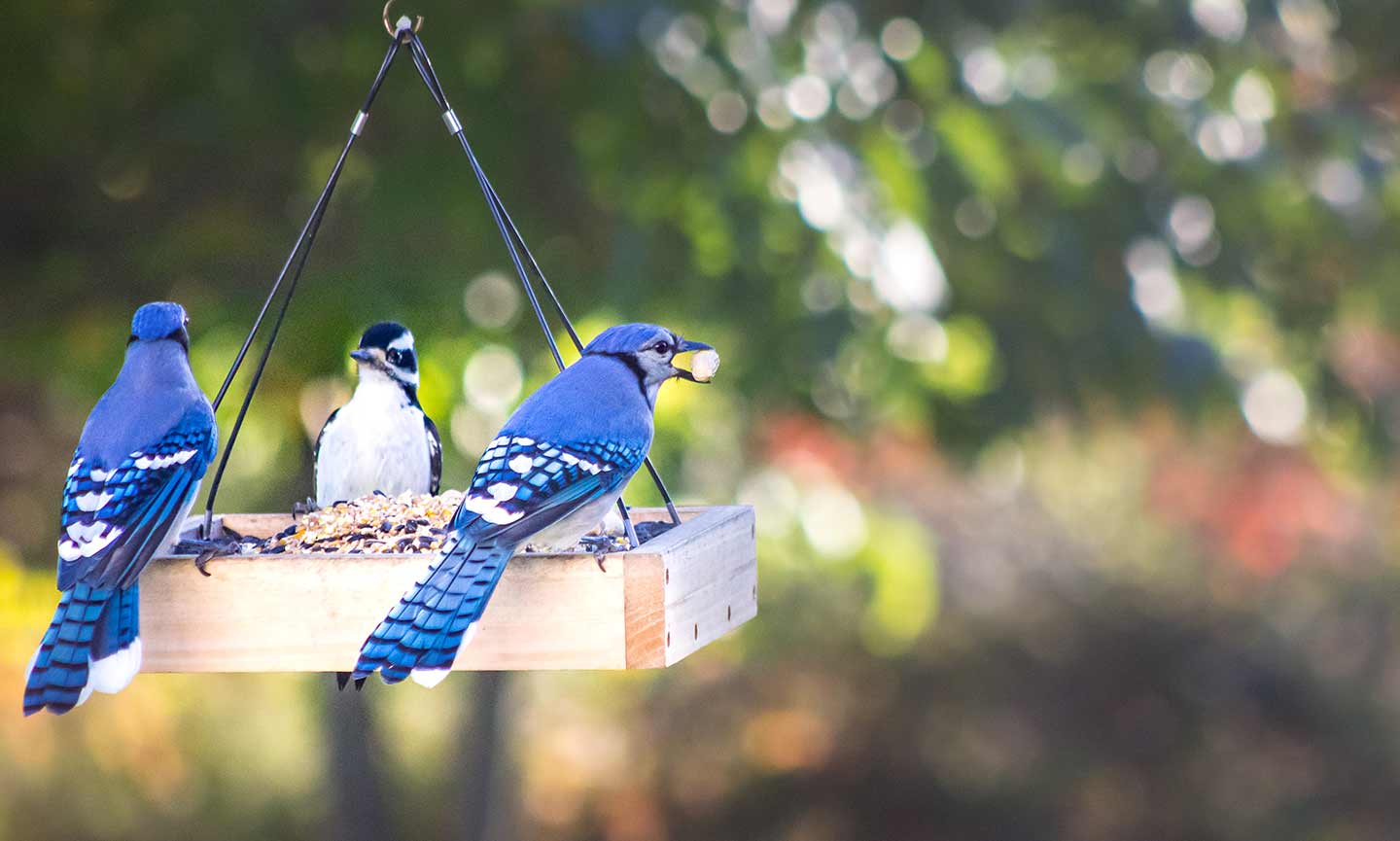
Backyard Birding
If you’d rather bring the birds to you, backyard birding is a fun way to spot birds from your back deck, patio or balcony. Putting out a bird feeder or birdbath will attract birds to stop by your yard. Here’s what you need to know:
- Choose the right food: Different birds prefer different kinds of food. First, decide which species of local bird you hope to attract, then do some research to find out the best type of food to provide. The National Bird-Feeding Society lists birds and their preferred diets in charts for the Eastern and Western United States. LeBaron says a basic mixed feed is a good starting point to attract a variety of birds if you live in an urban or suburban area.
- Choose the right feeder: Birds have preferences for feeders, too, and they vary by species. Consult the National Bird-Feeding Society’s charts on bird feeders to find the best pick for your favorite feathered friends. If you have squirrels or other critters in your area, a squirrel-proof feeder can help prevent them from stealing your birds’ dinner.
- Best birdbath practices: Birdbaths give wild birds a source of water for drinking and preening. They should be shallow and kept full of fresh water. Plan to rinse and refill your birdbath two to three times per week, or any time you notice dirt or debris in the water. Just remember: Birdbaths aren’t right for every backyard. If you or your neighbors have an outdoor cat, birdbaths (and the birds they attract) can become easy targets for a hunting kitty.
As you start making your yard more bird-friendly, other local wildlife might stop by, too. Birds are often an indicator species of the health of a habitat, and recording your backyard birding observations in an app like eBird is one great way to contribute to larger conservation efforts. This community-sourced data is used for research, conservation and education around the world. The Great Backyard Bird Count, which takes place in February each year, also encourages birdwatchers to get outside and count and report as many birds as they can, to help scientists better understand bird populations across the world.
“It doesn’t matter how far you want to take birding,” says Lindo. Whether you’re planning far-flung expeditions or just enjoying the wildlife from your balcony, “Being involved is a great thing for you and all those around you.”
Frequently Asked Questions About Birding
Q:
What’s the difference between birding and bird watching?
Q:
What is the point of birding?
Q:
How popular is birding?
So, are you ready to go spot some birds? Going birding might just be your new favorite hobby—all you have to do is try it for yourself. Remember these key takeaways:
- You can go birding anywhere, from rural areas to suburban neighborhoods to big cities.
- In addition to learning about nature, birding can relieve stress and help you connect with other wildlife-lovers in your community.
- You don’t need any special gear to go birding, but a field guide and pair of binoculars can help.
- It’s a good idea to join a birding group in your area to learn the basics.
- You can even do some bird watching at home if you attract birds to your backyard, porch or balcony with a bird feeder.
Best of luck on your birding adventures!
More on Birds
Share:
